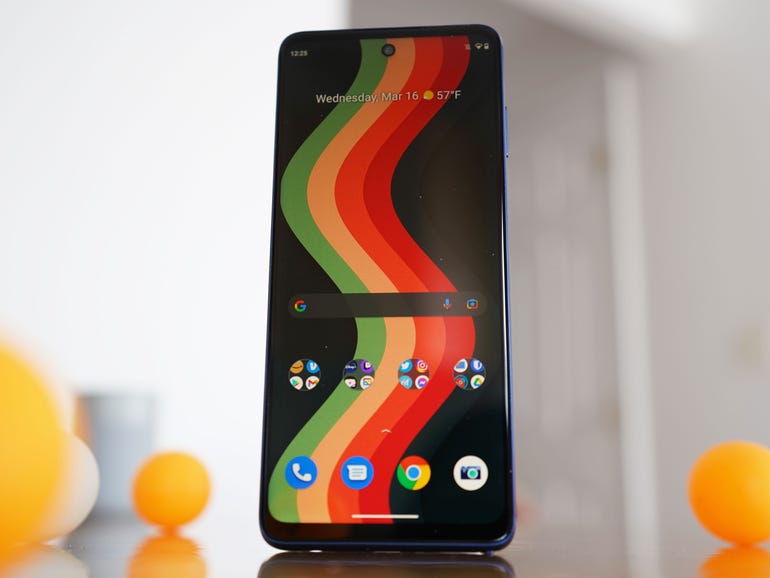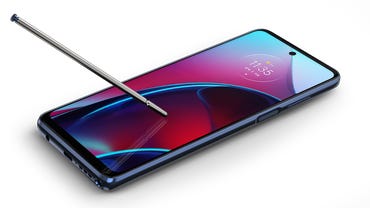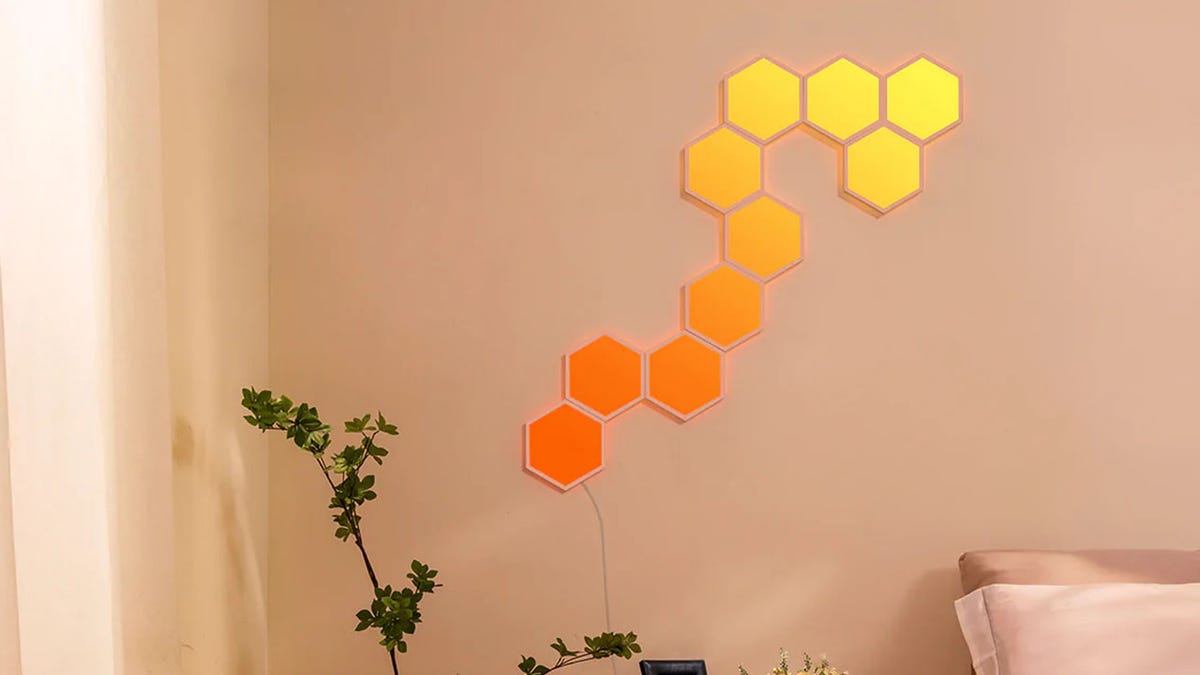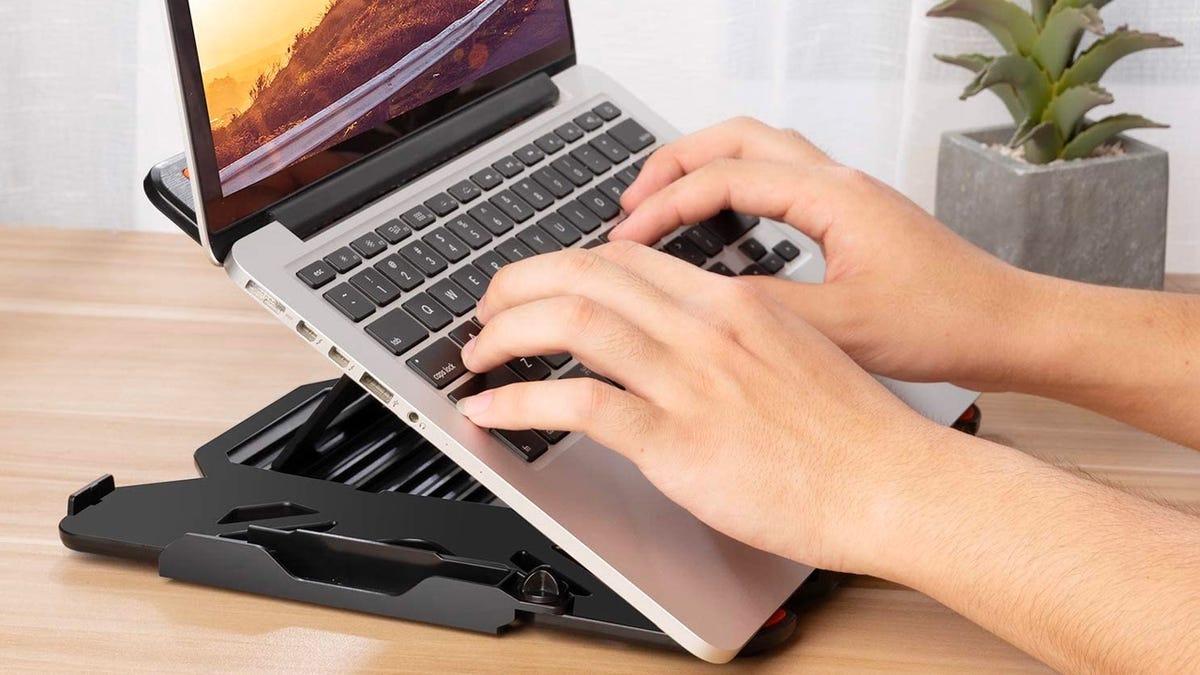Motorola Moto G Stylus 2022 review: Affordable Android written all over it
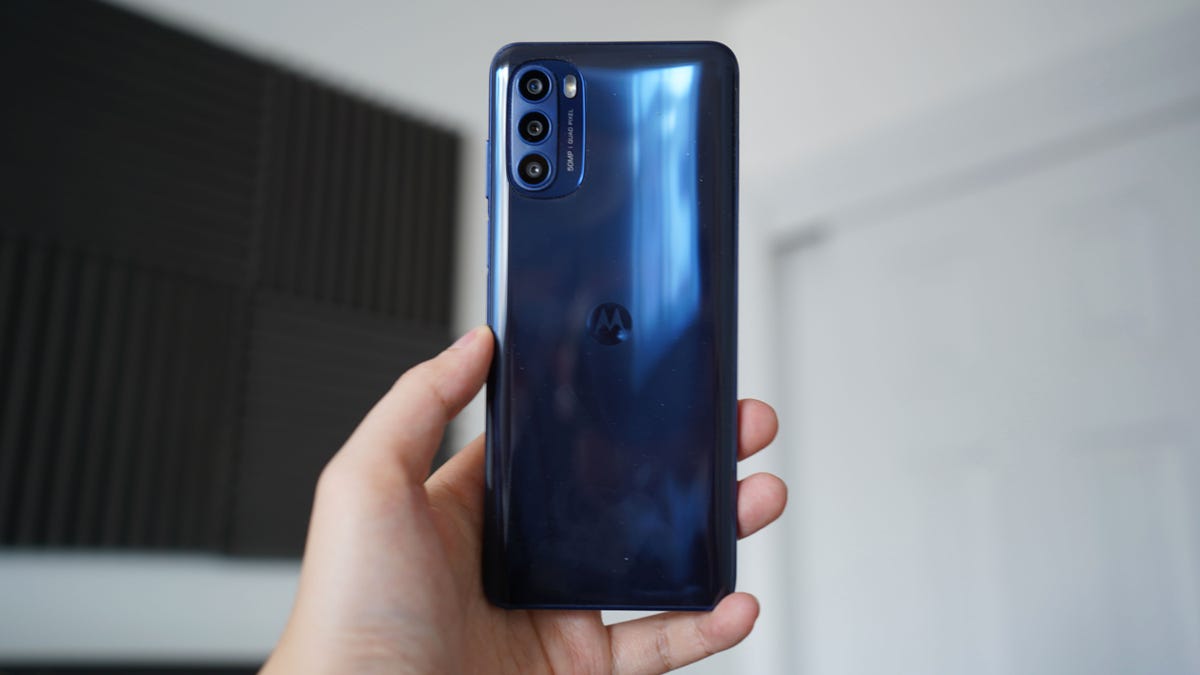
June Wan/ZDNet
In the realm of affordable Android smartphones, Motorola is among the top of the food chain. Its success is in large part due to the Moto G series, a family of big-screen, battery-packed handhelds that sell for as little as $139 at US carriers.
The Moto G Stylus (2022)
is the latest addition to the Motorola family and comes in a package that is both familiar and new. The company told ZDNet last year that the Moto G Stylus was its most popular model, so this updated iteration of the
2020 version
doesn’t come as a surprise. The question is: Has Motorola changed the $299 handheld enough to make it any more competitive than it already was?
Like
- Large 6.8-inch display with 90Hz refresh rate
- 5,000mAh battery can last up to two days
- Built-in stylus phones gets the job done
- Has MicroSD card support and a 3.5mm headphone jack
Don’t Like
- No 5G support
- Lack of fast charging for a big battery device
- Single, bottom-firing speaker can be easily covered
- Will only receive Android 12 update
For clarity, the Moto G Stylus (2022) is the successor to the Moto G Stylus (2020), not the
Moto G Stylus 5G (2021)
. I know it’s very confusing, but, essentially, this new phone does not have 5G and is not a direct upgrade to last year’s model — which did have 5G. Got it? Good.
Specifications
- Processor: MediaTek Helio G88
- Display: 6.8-inch LCD, 2460×1080 pixels, 90Hz refresh rate
- RAM/Storage: 6GB/128GB
- Cameras: 50MP main camera, 8MP ultra-wide + Macro Vision, 2MP depth sensor, and 16MP front-facing camera
- Battery: 5,000mAh
- Connectivity: 3.5mm headphone jack, USB-C, Bluetooth 5.0, Wi-Fi 802.11ac
- Colors: Twilight Blue and Metallic Rose
- Operating system: Android 11 (Android 12 upgrade in the future)
A quick scan through the specs of the new Moto tells us a couple of things: It’s built to last, plays well with multimedia consumption, and carries many essential features that most present-day flagships omit. But how do these numbers fare in the real world?
Design
This year’s Moto G Stylus looks a lot like the 2020; Centered hole-punch at the front, uniform plastic and glass-made construction, and a silo at the bottom-right to house the stylus. It’s clearly a design that is working for Motorola, and I’m glad the company is not fixing something that isn’t broken.
In the hand, however, the Moto G Stylus feels almost unwieldy. It sports a 6.8-inch display after all — up from the 6.4-inch of the 2020 model, and with a large 5,000mAh battery housed inside, the phone is comparably larger than the just-released
Samsung Galaxy S22 Ultra
in all dimensions. The form factor is justifiable if large-screen entertainment is your thing, but I’d avoid it if one-handed usability and comfort are a bigger priority.
Also: Samsung Galaxy S22 Ultra review
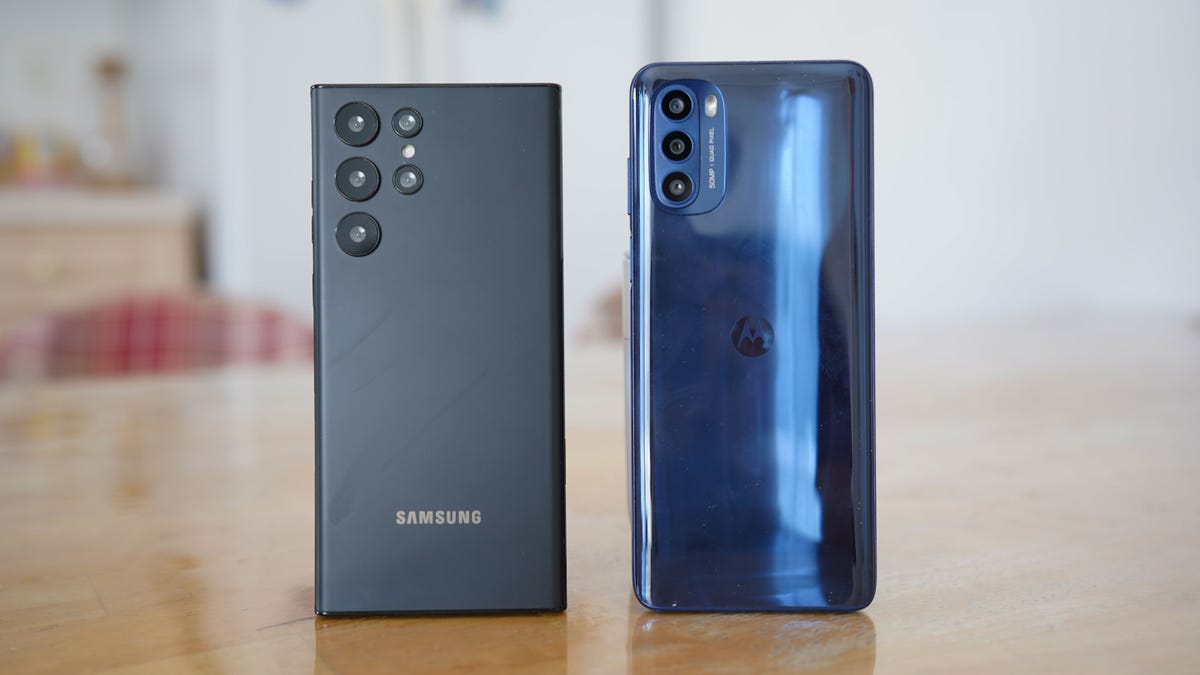
June Wan/ZDNet
Surrounding the edges of the Moto G Stylus is a side-mounted fingerprint sensor that doubles as the power button, volume rocker, 3.5mm headphone jack, SIM and MicroSD card slot, USB-C port for charging, bottom-firing speakers, and a slot for the stylus. It’s still bizarre to me that low and mid-range phones have more tools and ports than today’s flagships, but I’m glad that budget-minded shoppers won’t be losing such features for paying less.
Motorola sent me the Twilight Blue variant to test, which gracefully shimmers and reflects light patterns no matter how you angle the device. It’s also glossy, a fingerprint magnet, and begs for a microfiber cloth. If you’re looking for a phone that’s a little easier to keep looking clean, the matte Metallic Rose color may be a better choice. What’s great about both is the blending of plastic and glass. By using plastic, the Moto G Stylus is less susceptible to cracks and shattering and doesn’t provoke you to fit it into a case right away.
Performance
The new Moto G Stylus is powered by an octa-core MediaTek Helio G88 processor, ditching the Snapdragon of previous years’. When I asked Motorola why the company decided on the shift in chipsets, I was told this:
As part of our product development process, we consider various technologies and all available components in the industry to create the best products and experiences for consumers. It’s also important for us to consider the supply outlook and diversify our portfolio to meet demand.
Chip shortages and supply chain issues have plagued tech manufacturers since the start of the pandemic, and there seems to be no end in sight. It’s good to see that Motorola has managed to adapt and pivot its smartphone strategy during this time — hopefully, without compromising anything in the process.
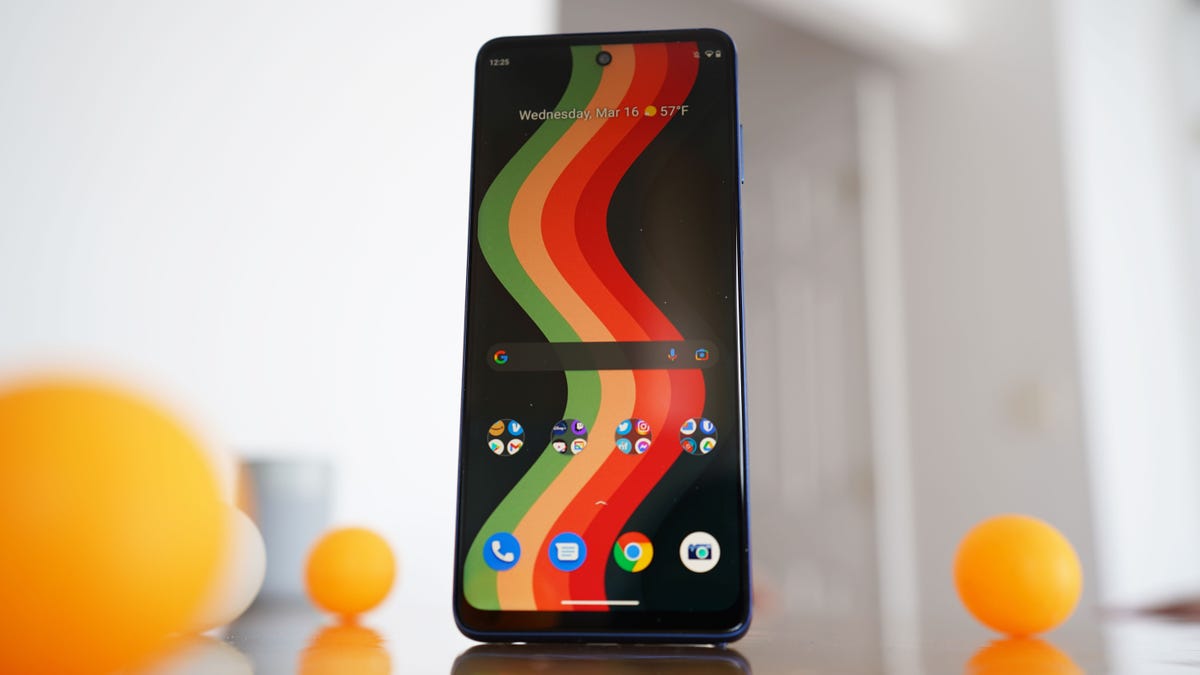
June Wan/ZDNet
While I didn’t get a chance to test out the
2020 Moto G Stylus
, my ZDNet colleague and mobile expert Matthew Miller praised its mid-range Snapdragon 665 processor for “performing well most of the time”. That seems to be the same story with this year’s switch-up, as the Helio G88 chipset has done a fair job powering me through my daily apps and services, including Reddit, YouTube, Instagram, and Slack.
I found the general user experience very enjoyable, thanks in part to the upgraded 90Hz refresh rate. There continues to be an influx of high refresh rate displays within the affordable phone market, and the benefits are evident. Scrolling through walls of text and news feeds was smooth on the Moto G, making my transition from the
Samsung Galaxy S22
— with 120Hz — feel less significant.
Still, minor freezes and hiccups were frequent when navigating, browsing, and loading apps. Even with 6GB of RAM (2GB more than the 2020 model), there were occasions when the phone would stutter or take an extra second to switch between landscape and portrait orientation. Keep in mind that the Moto cost $299, so many of these problems are to be expected.
What I didn’t expect was how well games like Asphalt 9 ran on the device. By default, the game tailored the graphics to low and medium settings, and I found that to be just right. Frame rates would shift between 30 and 60 fps, and the phone didn’t overheat to the point of discomfort. By the end of things, I took the gamble of playing Genshin Impact, one of the most graphic-intensive mobile games, and the Moto G Stylus was barely able to run it at the lowest settings. Clearly, there’s a fine line between what the phone can do and cannot.
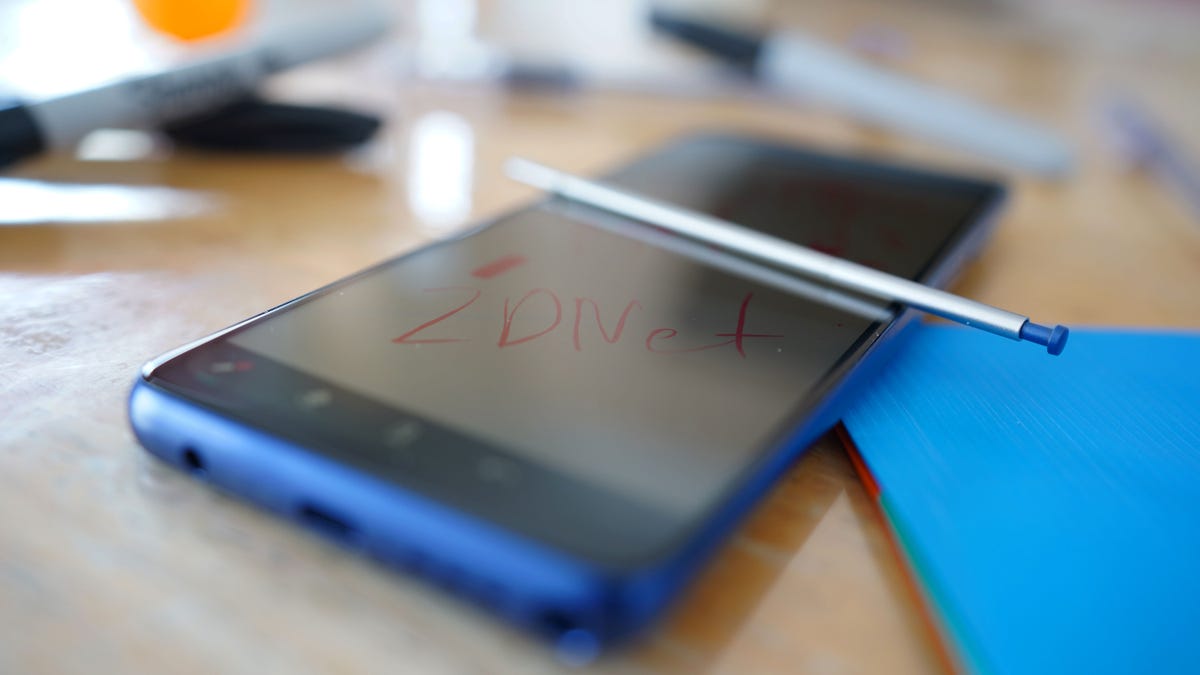
June Wan/ZDNet
One of the main reasons to consider the Moto G Stylus is…the stylus. Besides the $1,200
Samsung Galaxy S22 Ultra
, the Motorola is the only other 2022 phone with a built-in stylus, which helps it stand out in a crowded, sub-$300 market. The companion accessory is practical. It doesn’t have any fancy Bluetooth features or 4,096 pressure levels like Samsung’s S Pen but gets the job done for signing PDFs, jotting down notes, and giving your inputs more precision. Using the Moto reminded me a lot of the Sony Ericssons and Nokias back in the day. The built-in stylus is fun to use and makes the overall experience refreshingly nostalgic.
Also: Best stylus phone: Take note of these top picks
Lastly, it’s worth mentioning that the Moto G Stylus only has a single-firing bottom speaker. The sound quality is clear and gets plenty loud, but it is also very easy to cover if you’re holding the phone in landscape orientation. This design choice is a little confusing because the 2020 Moto G Stylus has stereo speakers, which made for a much more immersive and surround-sound experience. Fortunately, wired headphone users can rejoice with the 3.5mm jack — remaining from the previous model.
Camera
The back of the Moto G Stylus houses three cameras: A 50-megapixel main camera, an 8MP ultra-wide plus Macro Vision, and a 2MP depth sensor. The phone can capture moderate to good pictures and videos in the right lighting. But in general, I’d say that most users will only find the main and ultra-wide lenses useful.
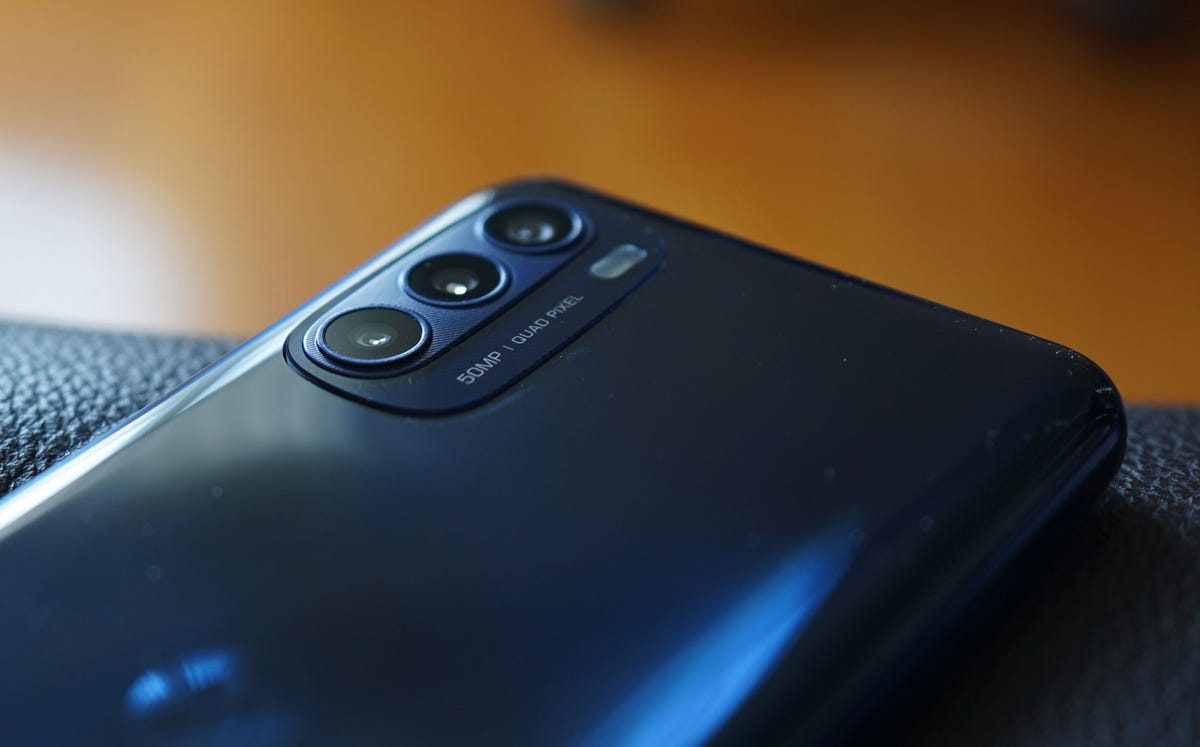
June Wan/ZDNet
Here’s a shot that I took of a crème brulée doughnut. Besides being delicious, the pastry has a good amount of sharpening and focus, while the background is naturally blurred out. The color is a little warmer side than what the actual food looked like, but the picture is still Instagram-worthy.

June Wan/ZDNet

June Wan/ZDNet
Now for something a little more grand. In this shot, I managed to get both the Oculus (front) and Freedom Tower (back) in the frame thanks to the 8MP ultra-wide lens. Even with the wider field of view, the Moto was able to capture many details, including the individual lines of the Oculus’ wings. My only issue with this image is how dull and desaturated the sky looks. During the middle of the day, this was taken in 55°F, New York City weather.
And finally, check out this picture that I captured at night below. Phones often get lost with what subject to focus on and how to handle bright lights in the dark. Yet, I like that I can still read the “Welcome To Chinatown” signage, and a lot of the colors from the neon lights are accurate. You can see where the Moto camera underperforms when you look at the blurriness and overexposure of the lights on the stores and the two dragons’ tails.

June Wan/ZDNet
In general, the Moto G Stylus camera is passable and performs like how a $299 phone should. If you want a better phone camera, I’d recommend paying a little more for the
Google’s Pixel 5a with 5G
Apple’s iPhone SE (2022)
.
Also: Best camera phone: Pro-level photos and videos at a click
Battery
The Moto G Stylus has an upgraded 5,000mAh battery (from the 4,000mAh of its predecessor), and the difference is noticeable. I regularly got 5-6 hours of screen-on-time (SOT), but that was with moderate to heavy use. For lighter usage, it’s definitely possible to achieve Motorola’s two-day battery life claim.
However, the gripe I have with the Moto G Stylus battery doesn’t have to do with its capacity, but the charging speed. A 10-watt adapter is included in the box, and that’s as powerful as the phone can charge. Comparably, other mid-range options like the
OnePlus Nord N10 5G
Samsung Galaxy A71
support 30W and 25W fast charging, respectively.
Also: OnePlus Nord N10 5G review
Updates
Motorola launched the Moto G Stylus (2022) with Android 11 when Google is already set to release Android 13 later this year. As much as I favor the improved reachability features and cleanliness of the outdated software version, it’s underwhelming to see a phone released with it in 2022.
Software updates have never been Motorola’s expertise. It remains behind Samsung, Google, and Apple on that front. But with this year’s Moto G Stylus, the company is committing to one major OS upgrade and three years of security updates, which is a step-up from last year. Still, that means the phone will eventually run on Android 12, but not Android 13.
Also: How Samsung’s new software upgrade policy fares with the industry
Conclusion
The Moto G Stylus is a very interesting phone. It’s the perfect affordable alternative for consumers who don’t want to spend $1,200 on the Samsung Galaxy S22 Ultra but seek the benefits of a stylus. At $299, the Moto is priced just right and offers a balanced, value-driven experience.
Deciding on the device is not as this-or-that as it seems, though. This year’s model lacks 5G support — which has become a popular value proposition for budget shoppers, has a downgraded speaker system, and Motorola’s track record for software updates leaves something to be desired.
If the future-proofing nature of 5G and stylus support are must-haves for you, I’d recommend last year’s Moto G Stylus 5G (2021) or holding out for Motorola to release the successor to that model. If you can do without a stylus, there are still plenty of cheap 5G phones available to shop from.

